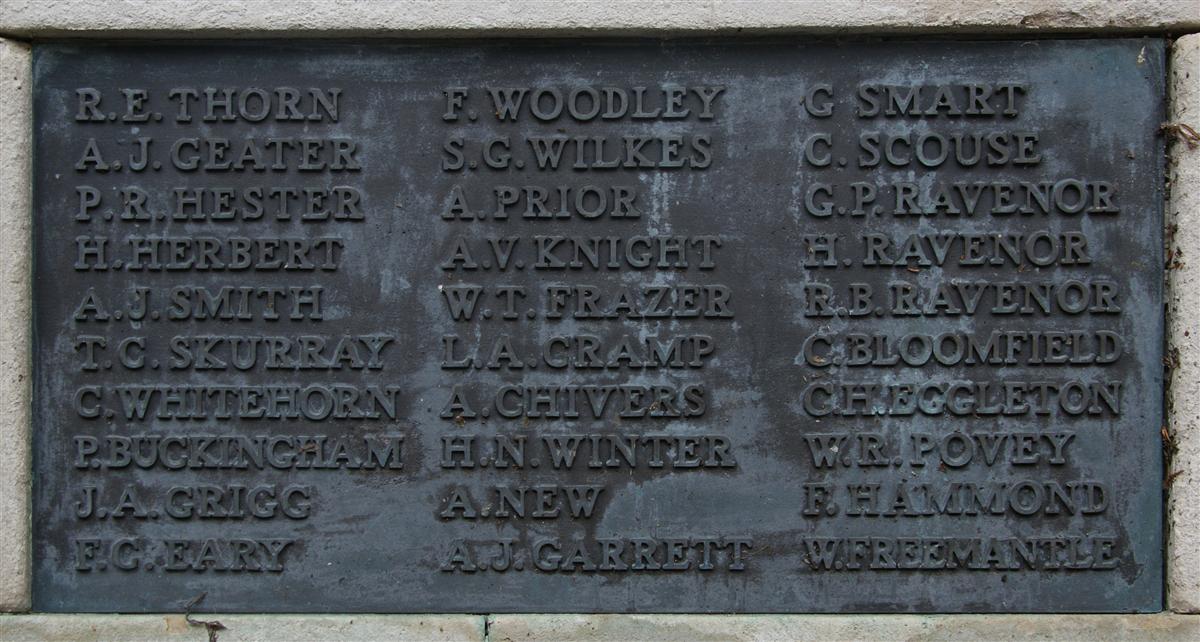Samuel George Wilkes
Sergeant R.24248 Samuel George Wilkes, 17th Battalion, King’s Royal Rifle Corps
Samuel was born on 17 October 1878, the son of Samuel Charles Wilkes and his wife Fanny née Collister. The birth was in Murree, Bengal, India where Samuel senior was a serving soldier, a Sergeant in the 2/60th Rifles, the couple had married in Murree in 1969, when Fanny was fifteen. Samuel’s elder sisters, Elizabeth Fanny (born 1872) and Lydia Rose (1877) were also born in Murree. By 1881 the family was in England, living in Battersea. There next move was to Reading, where Samuel senior found employment as a brewer’s labourer and Samuel started his working life as a doctor’s errand boy.
On 15 April 1893 14 year old Samuel enlisted into the Royal Marines, where he would have served as a drummer boy or similar. However, he did not stay with the Marines for the full fifteen-year term he signed on for; on 19 March 1895 he transferred from the Marines to the Army, becoming a boy soldier with the King’s Royal Rifles (regimental number 8990) – the King’s Royal Rifle Corps was the renamed 60th Regiment of Foot, his father’s old regiment.
The change shortened his term of service to the army term of twelve years. Unusually this seems to have counted from his original enlistment date; boy soldiers’ service before they were eighteen did not normally count as part of their twelve-year term.
He was with the 4th Battalion, King’s Royal Rifle Corps (KRRC) when it was sent to South Africa in December 1901 to reinforce the British force in the final months of the Second Boer War. The Anglo-Boer War website summarises the battalion’s involvement:
The 4th Battalion sailed from England on 9th December 1901, and after the disaster at Tweefontein, 25th December 1901, the battalion, along with the 1st Black Watch, newly arrived from India, were sent to reinforce Rundle's command in the north-east of the Orange River Colony, being employed chiefly about Harrismith till the close of the war (see Lord Kitchener's despatch of 8th January 1902 and King's Royal Rifle Corps Chronicle). During the period they were in this district several very fruitful drives were carried through, the excellent way in which the infantry held the blockhouse lines and posts contributing greatly to the successful results obtained.
For his contribution Samuel was awarded the Queen’s South Africa medal with clasps for 1901, 1902 and the Orange Free State.
On 16 April 1905 his twelve years were up and he was discharged to civilian life. He became a salesman; in 1911 he was selling sewing machines and living in Woking with his wife Evelyn née Liddiard, who he had married in Newbury (Evelyn’s home town) in 1909.

The regimental badge of the Kings Royal Rifle Corps, as used on CWGC headstones. |
He served with the regiment’s 17th (Service) Battalion (British Empire League) – this was a battalion raised by the British Empire League commencing on 16 May 1915. An old soldier like Samuel probably volunteered before that date, but was very likely to have been deemed unfit for immediate service in the field (some fitter old soldiers were shipped out to France almost immediately). However, old soldiers were extremely valuable in training the new recruits. Samuel’s past service saw him wear Lance Corporal’s stripes on a number of occasions, each time losing them on disciplinary grounds. At time of war any NCO experience would have been seized upon and he rose to the rank of Sergeant.
The 17th Battalion served in France from 3 May 1916 until the end of the war though it suffered badly during the German Spring Offensive of 1918 and was reduced to cadre (minimal) strength in May. Nothing is known of Samuel’s time with the battalion, though he was awarded the ‘Emblem’ which was a bronze oak leaf that could be attached to his Victory Medal ribbon and showed that he had been ‘Mentioned in Despatches’ for some meritorious, most often valiant, service in the field. An ‘MID’ is generally viewed as a minor gallantry medal.
 Samuel's name on Newbury War Memorial. (upper middle) |
At the time of his death Samuel was working as an agent in Ilsley but he was brought to Newbury for burial in the municipal cemetery at Shaw on 29 May 1920.
He is remembered on tablet 12 of the Newbury Town War Memorial and on the roll of honour and memorial board in St Nicolas’s Church.

Find a memorial :
| Died this day: | |
| 26 April 1915 | |
| Leonard J Benham | |
| Speenhamland |

Like this site? Show your appreciation through a donation to a great charity.